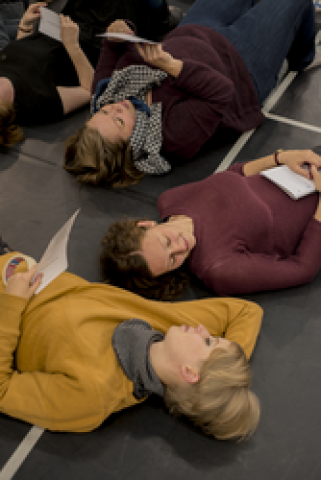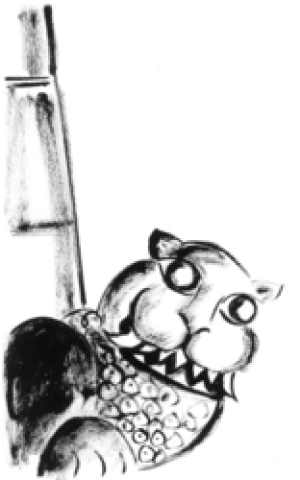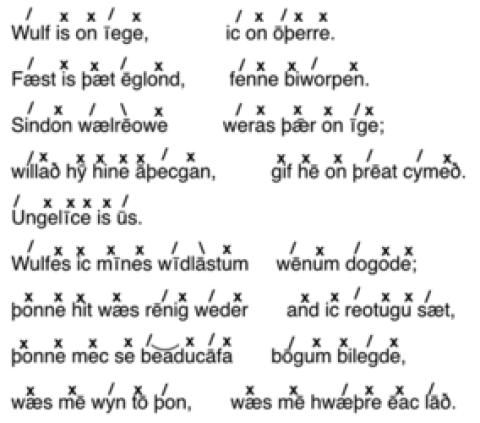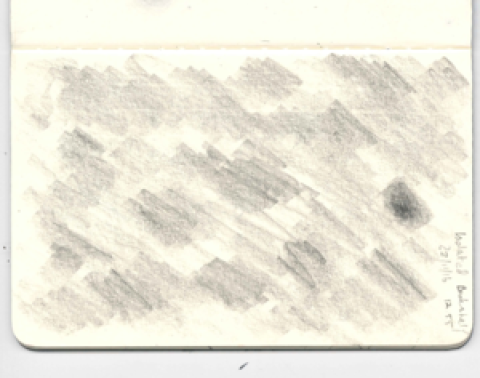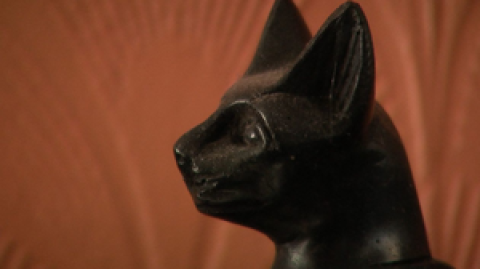Editorial
The ongoing climate emergency and the coronavirus pandemic have both impacted on the role and function of JAR, and the Research Catalogue in particular, on which the journal is based. During the pandemic, online formats have become a necessity, enabling meaningful communication in conditions of social distancing and helping reduce the need for travel and, hence, our carbon footprints (despite the Internet’s own large one1). As positive as this may be, it should not be forgotten that those developments also dovetail into historical transformations to do with the capitalization of academia. While the facades of universities have become ever more dazzling, the closure of workshops and shrinking of studio spaces has in many places increased, leading to an overemphasis on digital solutions for material, cultural and social issues and a loss of long-established skills, embodied knowledges and physical encounters.
Those forces haven’t changed much during the current crisis. However, what has started to shift is the sense of ‘normality,’ which has increasingly become more hybrid or post-digital. That is, rather than playing analogue against digital practices as we have had it for a long time, the issue now has become how to meaningfully develop and integrate a multiplicity of practices. Crucially however, as the coronavirus pandemic has reminded us, the physical aspects of digital culture – access to technology, infrastructure and support – has also led to a stronger imbalance between institutionally affiliated and non-affiliated artists and also between countries or regions where access and connectivity varies greatly. It is clearly not the case that, with the Internet’s growth in importance, fundamental injustices across the globe have gone away – in fact, they have been amplified in numerous ways and, in the recent crisis, by social media in particular.
Still, within the realm of ‘the digital,’ in which we as an online journal operate, a multiplication of practices is discernable since the beginning of the coronavirus pandemic. Although this process was already underway before the events of this year, this intensified focus on the Internet has lead to an understanding of art making and artistic research as more hybrid. Two experiences during this time might have fed this: on the one hand, against a traditionally high degree of skepticism, many artists have started to experience the value of online spaces in terms of criticality and, crucially, also art making; on the other hand, artists have also experienced the loss that decreased mobility and personal contact, and a lack of opportunities have meant to them and the quality of their art. These experiences vary greatly across the globe with different national and regional lockdown and containment strategies in place, but they also vary a lot between disciplines, where the economic basis of some has virtually disappeared. Nevertheless, taken together, those experiences suggest the emergence of different configurations, some of which can perhaps already be traced in JAR with its experience in the border regions of hybridity.
Looking back at JAR’s 20 plus 1 issues, it seems clear that it wasn’t so much ‘new media’ artists and researchers that chose to publish with us, but often practitioners deeply engaged in local, social, cultural and material research, who were looking for different articulations, audiences and relationships. Within the paradigm of the global, that Internet technology stands for, it seems that artists have managed to articulate the specificity of what is it they are doing, allowing them to stay much closer to their materials and practices in a global context. In order for this to happen, we have insisted for a long time that journal publication isn’t something one does ‘after the fact,’ but that notions of practice have to be sought, kept alive and developed within ‘an article’ however foreign this may feel at the beginning or perhaps even throughout.
JAR’s own proposition has been that of ‘expositionality’2, that is, an extension of artistic practice into modes of articulation refuting as it were its (simple) representation. The performance of research that this entails leads, for instance, to different roles of media and text, where the latter isn’t taken as interpretation of the former and where the former isn’t taken as documentation only of work ‘outside’. Rather than representational transparency, JAR has sought to create a paradigm where the negotiation of hybridity is part of the creation of meaning and where language can become active on all levels, including as ‘nonsense.’ And, yes, we really think that such submissions are reviewable, but also that definitions of what counts or doesn’t count as knowledge or art must be shifted. On this basis, one could suggest then that when the role of representation is reduced in expositional articulations, the specific, local and not-transferrable knowledge can actually feature in a global context without the same negative tradeoffs that reduce it just to an illustration, in need of a bloated text around it.
As expenditure (climate emergency) and risk (coronavirus pandemic) have started to matter more, within an increasingly hybrid setting, we might see shifts of values that demand more artistic ownership of items in global circulation making it much harder to remain in constant exchange. Rather, in a recalibration of the term, ‘exchange’ then is not a formal operation but an expression of quality for which expenditure and risk may be deemed acceptable or, indeed, necessary. This means that sometimes, we might not travel somewhere to give a lecture or not make a polluting piece of art when we can find alternatives with our increased hybrid repertoire; it may, however, mean that at other times, we do travel and/or pollute when we know it adds quality in another sphere. This I would link to the third ongoing crisis: the violence against, in particular black, minorities as highlighted (again) by the Black Lives Matter movement. There is a sense that neither here, nor in the context of the climate emergency and coronavirus pandemic, is business as usual an option; particularly, once people understand that their decisions are involved in systems and structures whose deathly consequences are unequally distributed.
There is, of course, no rule by which to make decisions. However, with the suggested shift of normality has come a practice in decision-making on difficult ground and a reconsideration of what is important. In the last editorial3 I suggested that inside editorial and peer-review processes may lie what could be called ‘epistemic solidarity’ – the emergence of local fabrics, which may not be able to solve problems on a planetary scale, but which can critically and creatively care for people, concerns and materials. My sense is that JAR is very much implied in this. It is, thus, from the angle of quality generation and its conditions that expositionality becomes political, rather than from set value systems that simplify decision making for the price of the specific. One way of defining the ‘artistic’ in this context may be through its ability to invent and develop exceptions rather than rules, which can offer up qualities, where these ‘systems’ are failing.
Michael Schwab
Editor-in-Chief
- 1Please refer to Joanna Moll’s CO2GLE https://www.janavirgin.com/CO2/CO2GLE_about.html to check this out in real-time.
- 2Schwab, Michael. 2019. “Expositionality.” In Artistic Research. Charting a Field in Expansion, edited by Paulo de Assis and Lucia D’Errico, 27–45. London and New York: Rowman & Littlefield. https://www.researchcatalogue.net/profile/show-work?work=790463
- 3https://jar-online.net/issues/19

